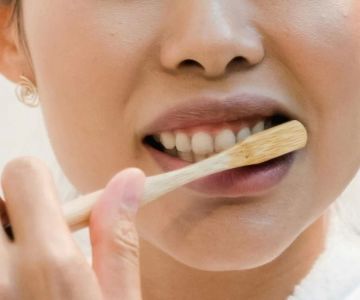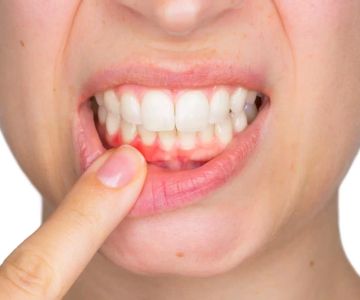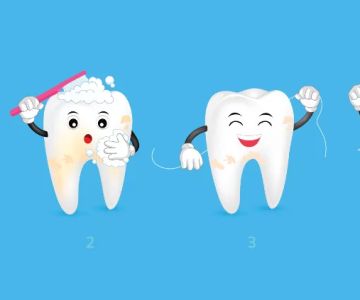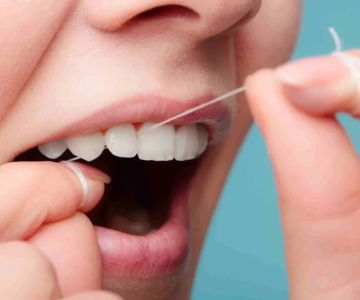Essential Self-Check for Oral Health: Improve Your Dental Care Routine
- Step 1: Assess Your Teeth and Gums
- Step 2: Check for Plaque and Tartar Build-Up
- Step 3: Inspect Your Tongue and Mouth
- Step 4: Evaluate Your Overall Oral Hygiene Routine
- Step 5: When to See a Dentist
Step 1: Assess Your Teeth and Gums
Start by checking your teeth and gums. Look for any signs of discoloration, chips, or cracks. Gently press your gums to see if they are tender, swollen, or bleed when touched. Healthy gums should be pink and firm, with no signs of inflammation.
Step 2: Check for Plaque and Tartar Build-Up
Plaque is a sticky, colorless film that forms on teeth after eating. Over time, plaque can harden into tartar, which can only be removed by a dentist. To spot plaque and tartar, feel your teeth with your tongue for any roughness or sticky patches. Regular brushing and flossing help prevent this buildup.
Step 3: Inspect Your Tongue and Mouth
Next, look at your tongue and the inside of your mouth. The tongue should be pink and free from any sores, coating, or discoloration. If you notice any unusual bumps or lesions, they could be a sign of an infection or other oral health problem. Your cheeks and the roof of your mouth should also be checked for sores or lesions.
Step 4: Evaluate Your Overall Oral Hygiene Routine
Take a step back and evaluate your daily oral hygiene routine. Are you brushing your teeth at least twice a day with fluoride toothpaste? Are you flossing daily to remove food particles and plaque from between your teeth? Consider if you need to improve any aspect of your routine, such as switching to a better toothbrush or using mouthwash for additional protection.
Step 5: When to See a Dentist
If during your self-check, you notice persistent pain, gum recession, or any changes in the appearance of your teeth or gums, it’s important to schedule a visit to your dentist. Regular dental checkups are essential to maintaining good oral health and preventing serious issues like cavities and gum disease.
By regularly performing a self-check for oral health, you can stay on top of your dental care and ensure that any potential issues are addressed before they become major concerns. If you're looking for professional advice or want to improve your oral hygiene products, visit Dentistry Toothtruth for expert tips and recommendations.
Want to enhance your oral health even further? Explore Dentistry Toothtruth for the latest dental care products designed to keep your smile bright and healthy!







 Westgate Dental Arts3.0 (2 review)
Westgate Dental Arts3.0 (2 review) Coventry Family Dental4.0 (247 review)
Coventry Family Dental4.0 (247 review) Familia Dental3.0 (1028 review)
Familia Dental3.0 (1028 review) Dr. Daniel S. Fife, DDS4.0 (31 review)
Dr. Daniel S. Fife, DDS4.0 (31 review) Dentistry At Suburban Square: Michael I. Wollock, DMD4.0 (1228 review)
Dentistry At Suburban Square: Michael I. Wollock, DMD4.0 (1228 review) Comfort Care Dental4.0 (1156 review)
Comfort Care Dental4.0 (1156 review) The Importance of Oral Health Education During Pregnancy for a Healthy Pregnancy
The Importance of Oral Health Education During Pregnancy for a Healthy Pregnancy Why Skipping Dental Checkups Can Lead to Bigger Oral Health Problems
Why Skipping Dental Checkups Can Lead to Bigger Oral Health Problems Best Tips for Brushing Your Teeth Properly for Healthy Gums: Essential Techniques for Oral Health
Best Tips for Brushing Your Teeth Properly for Healthy Gums: Essential Techniques for Oral Health Advantages of Porcelain Dental Restorations
Advantages of Porcelain Dental Restorations How Can Diabetes Cause Tooth and Gum Problems? Preventing and Managing Oral Health Issues
How Can Diabetes Cause Tooth and Gum Problems? Preventing and Managing Oral Health Issues Healthy Habits for Promoting Good Oral Health and Hygiene: Tips for a Healthy Smile
Healthy Habits for Promoting Good Oral Health and Hygiene: Tips for a Healthy Smile